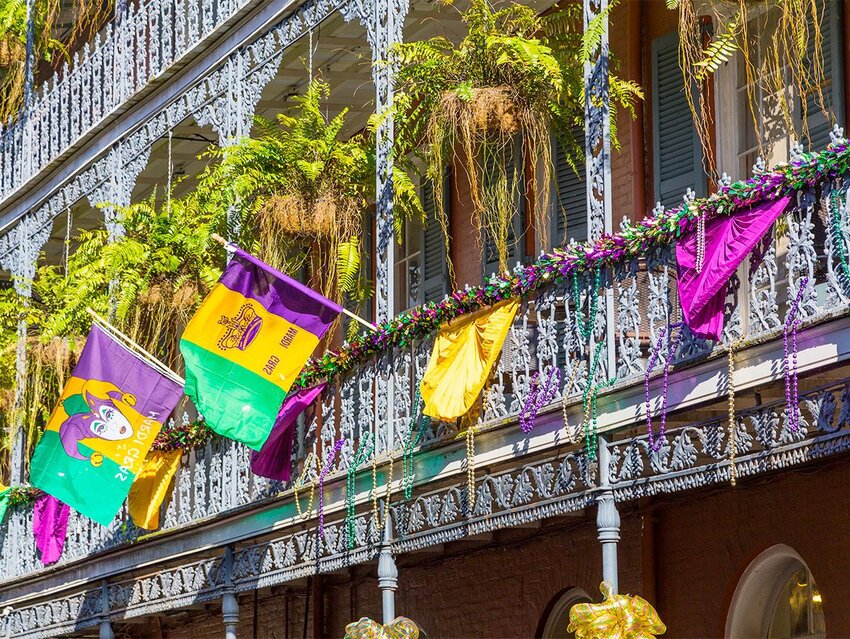It’s that time of year again. Well, it’s always some time of year, but this time we’re referring to Mardi Gras, the famous festival to celebrate the last day(s) leading up to the somber Lenten season. Mardi Gras is technically the Tuesday before Ash Wednesday, the official start of Lent, but some communities — namely New Orleans — begin celebrating days in advance.
“Lent” refers to the Catholic observation of the 40 days leading up to Easter Sunday. If a Catholic friend says they’re “giving up dessert” for Lent, they’re observing the practice of making a small sacrifice or intention over the course of the season, in recognition of Jesus Christ’s crucifixion. Many people abstain from eating meat during this time, at least on Fridays.
While the revelry in New Orleans is decidedly non secular, it still developed out of the religious observances. Mardi Gras developed into a big blowout party right before the reverent period of Lent. Even on a smaller scale, many observers eat a pancake dinner for Mardi Gras, a tradition that was started to use up butter before Lent.
It’s traditionally a French holiday — Mardi Gras literally translates to “Fat Tuesday” — but it has become internationally associated with the celebrations and parades in New Orleans. Different Francophone cultures observe this holiday in different ways, but this list of special Mardi Gras terms and expressions is New Orleans-centric. Laissez les bon temps rouler! (Let the good times roll!)
Boeuf Gras
This French term translates to “fat beef.” A fattened bull was the ancient symbol of the last meat eaten before the Lenten season. While a papier-mâché version has been used for many decades, Mardi Gras historians say a live version was part of the parade until 1909.
Carnival
“Carnival,” in this context, refers to the season of merriment that generally begins on January 6 (the day of the Epiphany in Christian tradition), and ends at midnight on Fat Tuesday. The word is also commonly used in Brazil and many Caribbean nations to refer to this time of year. “Carnival” originated in the 1540s to mean “time of merrymaking before Lent,” coming from the Latin caro (“flesh”) and levare (“lighten, raise, remove”).
Flambeaux
Coming from the French word flambé, meaning “flame,” flambeaux are the torches carried by people hired to light up the parade (who are also sometimes referred to as “flambeaux”). The tradition originated before streetlights, but has remained a staple of the parade. Traditionally, it’s a role passed down through generations, and it’s customary to tip the flambeaux.
King Cake
King cake is one of the most recognizable (and delicious) symbols of Mardi Gras. It’s an oval cake, generally decorated in the traditional purple, yellow, and green colors, with a plastic baby hidden inside. Tradition dictates that the person who finds the baby has to bring the cake next year.
Krewe
Originating in 1857, “krewe” is the generic term used to name all Carnival organizations in New Orleans. A krewe is led by a captain, and the oldest krewe still parading is Rex, named for its leader: the king of Carnival, voted in each year from its membership.
Neutral Ground vs. Sidewalk Side
These are local lingo terms to identify your parade-watching location to your friends. “Neutral ground” refers to the grassy median on one side of the parade, and the sidewalk side is just that.
Throws
Mardi Gras “throws” are the trinkets thrown from floats in response to the cry, “Throw me something, mister!” While beads are surely the most prevalent, anything can be a throw — hats, sunglasses, koozies, and plastic cups stamped with a krewe’s name are popular, too.
Featured image credit: amadeustx/ Shutterstock

